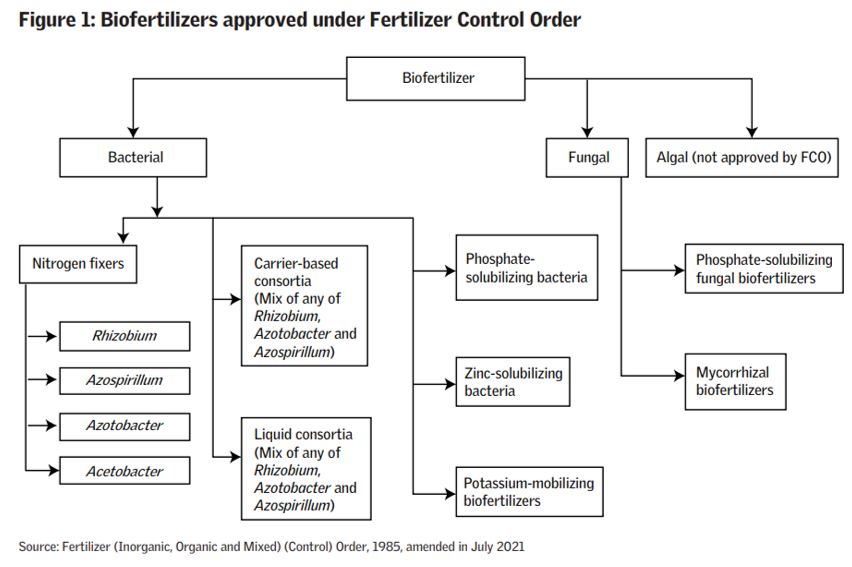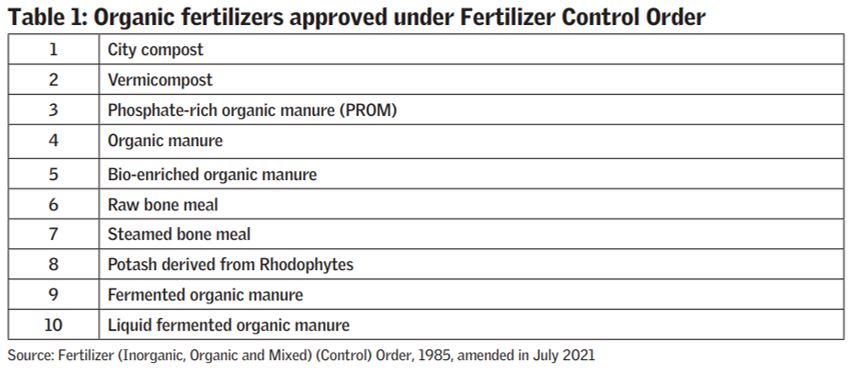

3rd May 2022 (6 Topics)
Context
According to a report released by the Centre for Science and Environment (CSE), availability, quality and uptake of bio-fertilisers and organic fertilisers in India is poor.
About
Key highlights of Report:
- In 2019, India was the second highest producer and consumer of chemical fertilizers in the world.
- Chemical fertilizer consumption: In 2020–21, the chemical fertilizer consumption in India, excluding single super phosphate (SSP), was 62.98 million tonne, with a growth of more than 82.5 per cent since 2000–01.
- More than 50 per cent of the chemical fertilizers consumed in India are in the form of urea.
- Subsidy: Total subsidy on chemical fertilizers is steeply growing every year.
- In 2020–21, the annual subsidy bill was Rs. 1,31,230 crore, which is more than 10 times the subsidy.
- Carrier-based solid bio-fertilizers:
- In 2020–21, India produced about 1,34,323 tonne of carrier-based solid bio-fertilizers.
- With a 48 per cent share, Tamil Nadu was the biggest producer of carrier-based solid bio-fertilizers in 2020–21, followed by Gujarat, Maharashtra, Uttar Pradesh and Haryana. Together, these five states were responsible for more than 90 per cent of the countrywide production of carrier-based solid bio-fertilizers.
- Liquid bio-fertilizers:
- In 2020–21, the total production of liquid bio-fertilizers in India was about 26,442 kilolitre (kl). This marked a growth of about 552 per cent over the 2014–15 figures.
- Karnataka was the single largest producer, with a 37 per cent share in countrywide liquid bio-fertilizers production, followed by Gujarat, Maharashtra, Kerala and Uttarakhand.
Bio-fertilizers:
- Bio-fertilizers are ready to use live formulates of beneficial microorganisms that on application to seed, root or soil mobilize nutrients through their biological activity in particular, and help in building up the micro-flora and soil health in general.
- In India, bio-fertilizers and organic fertilizers were brought under the regulatory purview of the Fertilizer (Inorganic, Organic or Mixed) (Control) Order (FCO), 1985, under the Union Ministry of Agriculture and Farmers’ Welfare, in 2006.
- As of now, 11 bio-fertilizers are approved under FCO, which include nitrogen fixers and phosphate-solubilizing and potassium-mobilizing bio-fertilizers of bacterial or fungal nature.
Organic fertilizers:
- Organic fertilizers consist of decomposed organic material derived from animal, human and plant residues.
- They are of different types depending on the source of the organic material and nature of composting.
- For example, organic manure is a mix of cattle dung and plant residues, while vermi-compost is developed with the help of earthworms.
- City compost is made from organic material in urban solid waste.
- Ten organic fertilizers are approved under FCO at present.
|
About Centre for Science and Environment (CSE):
|
Key-recommendations
The major recommendations include:
- A targeted, ambitious and well-funded nationwide programme is needed to drive the change towards organic and natural farming
- Quality of bio-fertilizers and organic fertilizers must be ensured by developing and institutionalizing a robust monitoring and enforcement mechanism through collaboration between the Centre and states
- Production and availability of bio-fertilizers and organic fertilizers must be ensured and their use must be promoted through a multi-pronged approach by the Centre and states.
More Articles





